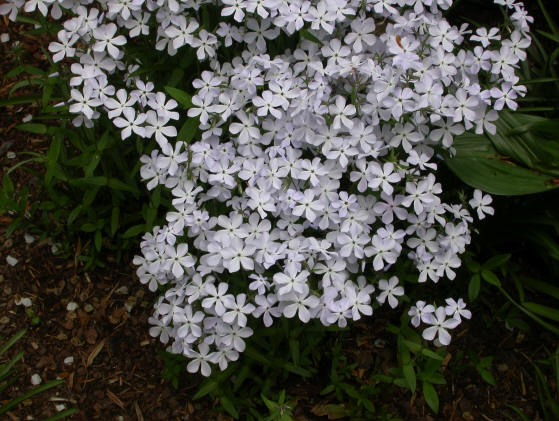|
Spotlight on Spring Blooming Native Perennials
Mary Ann Ryan
Adams County Master Gardener

Many of us have heard of Colony Collapse Disorder, or CCD, which is affecting the honey bees. Much research has and still is going on to understand what is happening to the hives. Although much has been learned about this problem, a very interesting concept has been born from it, which highlights our need to keep our native pollinators
vigorous because they are great at what they do.
One thing we can all do to keep our native pollinators healthy and strong is to plant native plant species These species are the very plants many of our pollinators are attracted to. Plants like foamflower, Echinacea, phlox, and asters are great for attracting not only bees but hummingbirds and butterflies.
Terpenes in plants also help attract pollinators. Many people don’t know this, but terpenes are volatile organic compounds (VOCs) that plants give off. These VOCs help pollinators detect flowers they may be interested in visiting.
What better way to spend time in our garden then to enjoy the plants and activities that surround them. And on a quiet afternoon, the humming of the hummingbird moth can be the most relaxing sound.
So what are some of these important native plants? As we are at the start of the blooming season, let’s focus on some spring-blooming native plants that we might upon inspection find in our gardens or in nearby natural habitats.
Phlox stolonifera is a part shade loving perennial that likes well drained soils. This six-inch wonder also called creeping phlox comes in colors of purple, blue and white. Butterflies are attracted to this spring beauty.

Phlox stolonifera, also known as creeping phlox, comes in colors of purple, blue and white
Tiarella cordifolia, or foam flower, is a lovely little perennial that sends up white spikes in the spring. Bees are attracted to this plant as well as butterflies. It takes part shade, but I have seen it grow in full sun as well. The fun thing about this little guy is its foliage, which remains throughout the growing season. There are
many variations on the foliage, from size to shape and color. This plant is definitely one to check out.
Another spring blooming native perennial worth checking out is Iris cristata, dwarf crested iris. This little guy will bloom in May with purple flowers. It only reaches about eight to ten inches and does great in part shade to full sun. It has sword-like foliage with the small iris flowers spattered throughout. Bees are attracted to this
plant.
Chrysogonum virginianum, also called green and gold, is a sweet ground cover plant that develops yellow flowers in April – May. This plant requires well drained soils and part sun. Bees will visit this perennial when in bloom. An easy to grow perennial and often overlooked, this one should be considered as a ground cover for a part sun
location.
Baptisia australis is a great spring blooming native perennial! This beautiful perennial gets about 4’ tall and loves well drained soils and full sun. It is a plant best suited for the background garden, due to its height. Its brilliant blue flower color on tall spikes is just a delight in any garden. Pollinator activity is great with this
one.
Aquilegia Canadensis, columbine, is a sweet native perennial that attracts hummingbirds as well. This spring bloomer has flowers that are yellow and red, blooming in late April through May. It naturally is found on wood’s edge in rocky locations, so if growing in a soil that is very high in organic matter, the plants may not do real well.
Part shade is best for this.
Dicentra eximia, our native bleeding heart, blooms in early spring, and unlike the large growing bleeding heart, the foliage will remain throughout the summer. This woodland plant has dissected leaves that add a soft texture to a woodland setting. Well drained soils are best for this part shade perennial.
As these are just a few native spring perennials, my hope is to inspire you to check out what is blooming this time of year in your natural habitat and try to repeat some of our native plants in your garden.
Read other articles on ecological gardening & native plants
Read other spring related gardening articles
Read more Articles by Mary Ann Ryan |